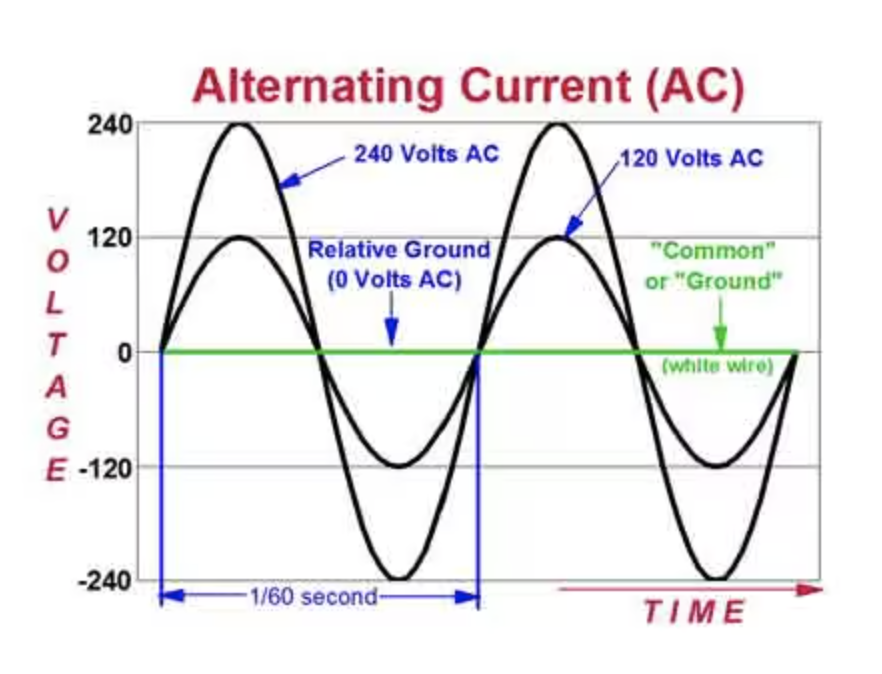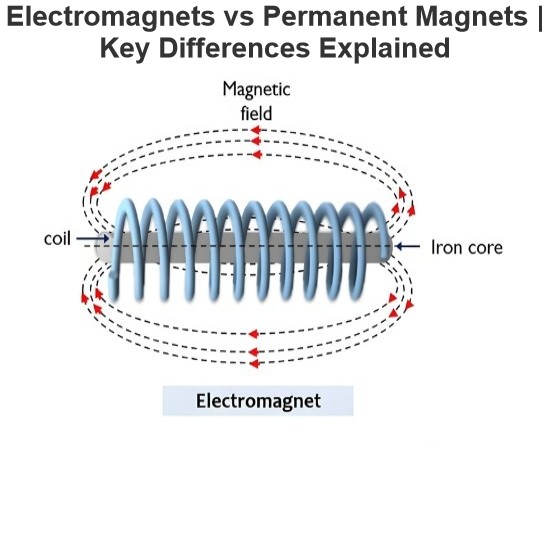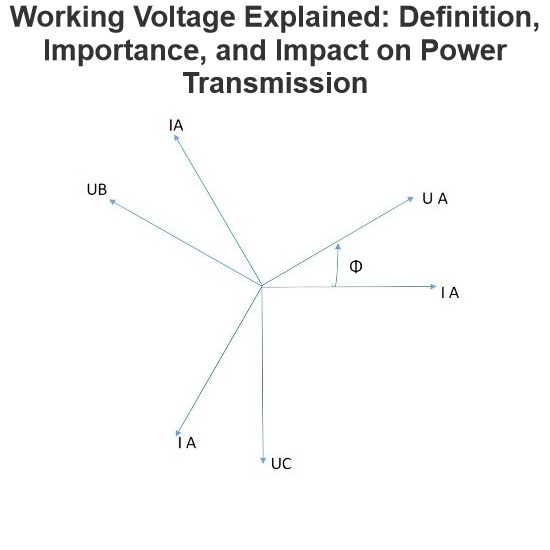Mai wa Alternating Current (AC)?
Alternating current (AC) wani babban muhimmanci na tattalin arziki da ta shafe rayuwarsu da dama. Kyauka a gina, koyarwa zuwa fadada voltages, da kuma koyarwa zuwa wurare dabam-dabam ya zama za a bayar da ita a kan koyarwa da koyarwa. Duk da cewa AC tana da kyaukuka da dama, kamar yadda ake amfani da shi a wasu abubuwa da kuma hanyoyin da suka duba, an yi amfani da shi a cikin ranarun.

A cikin tattalin arziki, akwai biyu na farko na nufin arziki: alternating current (AC) da direct current (DC). In fahimtar farkon da ke karkashinsu da kuma amfani da su a ranarun yana ba da damar in fahimta tattalin arziki da teknologi masu yawa da muke so.
Alternating current (AC) da direct current (DC) suna nuna biyu na nufin da yanayin arziki a kan tsafta. AC yana nuna yanayin arziki wanda yake kawo kawo da yawa, wanda yake samu tsarin sine wave. Amma, DC yana nuna yanayin arziki wanda yake kawo ciki a haguji. Farkon da ke karkashinsu, tsarin da suke, da kuma amfani da su suna ba da damar da ya fi dace a kan tattalin arziki.
Wani abin da take iya haɗa AC da DC shine kyaukan AC a kan koyarwa zuwa fadada voltages, wanda tana ba da damar da yake koyarwa zuwa wurare dabam-dabam. Transformers suke iya sauki da voltage ko kuma koyar da shi, wanda tana haifar da mutane a kan koyarwa zuwa wurare dabam-dabam. Amma, DC ba zan iya haɗa da koyarwa zuwa fadada voltages, wanda tana bude da yake a kan koyarwa zuwa wurare dabam-dabam.
Prinsipin da AC ta yi ana nuna kisan magnetic field wanda yake samu saboda yanayin arziki. Idan yanayin arziki yake kawo, magnetic field yake kawo, wanda tana ba da damar da yake sauki da voltage a kan conductors. Wannan siffin AC shine muhimmiyar zuwa AC generators da transformers.
An yi AC a kan abubuwan da suka samu, amma Nikola Tesla, wanda yake kasance Serbian-American inventor, yana da takaitaccen credit da take yi AC systems. Aikinta Tesla a kan koyarwa AC power da kuma inda motor tana taimaka wajen haɗa AC zuwa babban form na arziki.
A nan frequency, 50-cycle da 60-cycle alternating current suna nuna adadin lokaci da yanayin arziki yake kawo a kowace shekara. Frequency of AC power ta faruwa a duniya, idan 50 Hz yana zama standard a many parts of Europe, Asia, and Africa, amma 60 Hz yana zama norm a North America. Farkon da ke karkashinsu yana iya haifar da amfani da abubuwa da devices, don haka yana da kyau a yi amfani da frequency da ya danganta da abin da aka yi.
Kyaukan AC da DC ta faruwa a kan efficient power transmission. AC yana da kyau a gina da kuma yana da amfani a kan electric power generation, wanda tana ba da damar da yake da kyau da kuma cost-effective. Da kuma AC systems yana da kyau saboda ake iya sakamakon da shi a lokacin da aka buƙata, wanda tana haifar da raskin kasa. AC yana da amfani da kuma yana iya amfani da abubuwa, daga abubuwan da ke cikin gida zuwa abubuwan da ke cikin industries.
Generation da koyarwa AC suna nuna biyu na muhimmin components of the electrical power infrastructure. AC yana gina a kan abubuwan, kamar hydroelectric, thermal, da nuclear power plants, wanda suke amfani da generators don haɗa mechanical energy zuwa electrical energy. Ba tare da yadda aka gina, AC yana koyarwa zuwa wurare dabam-dabam a kan power lines, wanda suke da transformers, transmission towers, da substations wanda suke haɗa voltage levels don efficient distribution and usage.
Alternating current yana da muhimmiyar rolin a cikin ranarun, saboda tana amfani da abubuwan da devices da ake amfani da su, kamar lights, computers, da household appliances. Da kuma compatibility da transformers, ease of generation, da kuma ability to transmit power over long distances make it a cornerstone of modern electrical systems.
Frequency yana haifar da amfani da AC. Idan frequency ta faruwa, yana iya haifar da speed da performance of electrical motors. Change in frequency may result in the motor operating at a different speed or, in some cases, malfunctioning.
Transformers suna nuna essential devices in AC systems, saboda suke haɗa voltage levels to meet the requirements of various applications. Su yi haka tare da electromagnetic induction, wanda changing magnetic field in the primary coil induces a voltage in the secondary coil. By altering the number of turns in the coils, transformers can efficiently increase or decrease the voltage of AC power, depending on the application's specific needs.
Farkon da ke karkashinsu between alternating current and direct current yana ba da damar in fahimta tattalin arziki. Invention of AC by Nikola Tesla and other inventors has revolutionized how we generate, transmit, and use electricity. With an appreciation for the characteristics and applications of alternating current, we can better understand the technology and infrastructure that powers our world.
Yadda ake Yi Alternating Current?
Alternating current (AC) yana yi a haguji da kawo kawo da yanayin arziki a kan tsafta. Idan direct current (DC), wanda yake kawo ciki a haguji, AC yana kawo kawo. Wannan kawo-kawon yana nuna a tsari, wanda yake nuna sine wave. Bincike a cikin yadda ake yi alternating current.
Generation: AC yana gina tare da rotating magnetic field to induce an electric current in a conductor. A haguji, ake amfani da generators da alternators, wanda suke haɗa mechanical energy zuwa electrical energy. A cikin wannan devices, coil of wire yana dole a kan magnetic field, ko kuma magnet yana dole a kan stationary coil. Wannan dole yana ba da damar da magnetic field yake interact with the conductor, inducing a voltage and, consequently, an electric current that changes direction periodically.
Waveform: The alternating nature of AC is depicted by a waveform, which shows the voltage or current as a function of time. The most common waveform for AC is the sine wave, which can also take other forms, such as square or triangular waves. The waveform's shape determines the characteristics of the AC and how it interacts with various electrical components.
Frequency: One important parameter of AC is its frequency, which indicates the number of complete cycles the current undergoes per second. It is measured in hertz (Hz). Common frequencies include 50 Hz and 60 Hz, but other frequencies can also be used depending on the application. The frequency of the AC affects the performance and compatibility of devices and equipment connected to the power supply.
Voltage and current relationship: In an AC circuit, the voltage and current can be in phase (i.e., they reach their peak values simultaneously) or out of phase (i.e., they reach their peak values at different times). The phase relationship between voltage and current in an AC circuit can significantly impact the power delivery and the system's efficiency.
Transformers: A key advantage of AC is that its voltage can be easily changed using transformers. Transformers work on the principle of electromagnetic induction, with a changing magnetic field in the primary coil inducing a voltage in the secondary coil. By adjusting the number of turns in the coils, the transformer can step up or down the AC voltage as needed. This ability to adjust voltage levels makes AC suitable for efficient long-distance power transmission.
Wani formula don gyara alternating current?
Don gyara value of alternating current (AC) a lokacin da aka yi, ka ji da amplitude (maximum value) da angular frequency. Formula general don gyara instantaneous current in an AC circuit shine:
i(t) = I_max * sin(ωt + φ)
Where:
i(t) is the instantaneous current at time t
I_max is the amplitude or peak current
ω (omega) is the angular frequency, calculated as 2πf (where f is the frequency in hertz)
t is the time at which you want to calculate the current
φ (phi) is the phase angle, which accounts for any phase shift between the voltage and the current waveforms
Remember that this formula assumes a sinusoidal waveform, the most common form of AC. If the waveform is not sinusoidal, the formula will be different and depend on the specific shape of the waveform.
Another important value for AC circuits is the root-mean-square (RMS) current, which measures the effective current. The RMS current is useful for calculating power in AC circuits and can be compared to the steady current value in DC circuits. The formula to calculate RMS current from the peak current is as follows:
I_RMS = I_max / √2
Where:
I_RMS is the root-mean-square current
I_max is the amplitude or peak current
√2 is the square root of 2, approximately 1.414
Using these formulas, you can calculate the instantaneous current value for an alternating current waveform and determine the effective or RMS current value.























